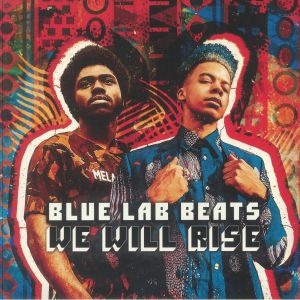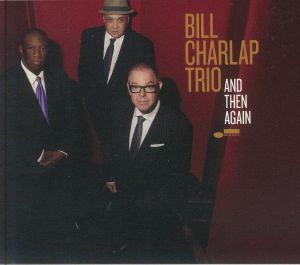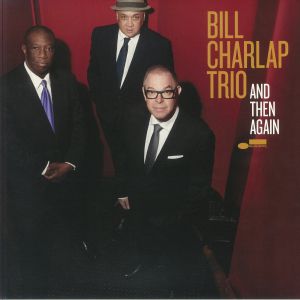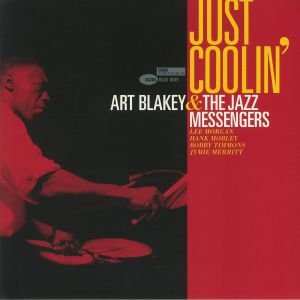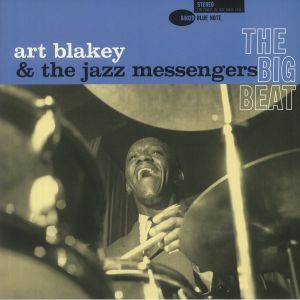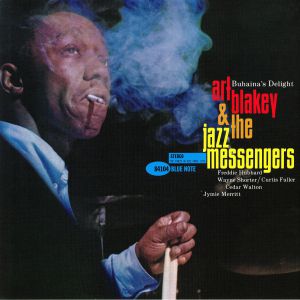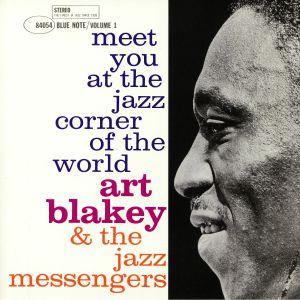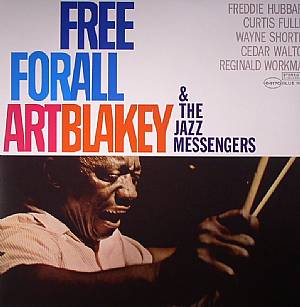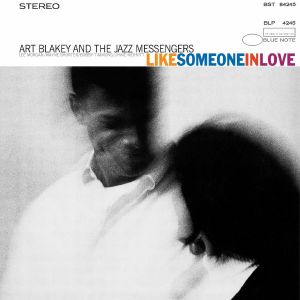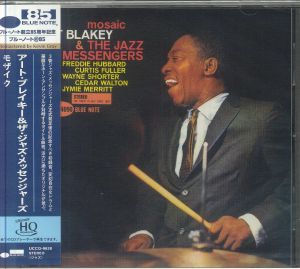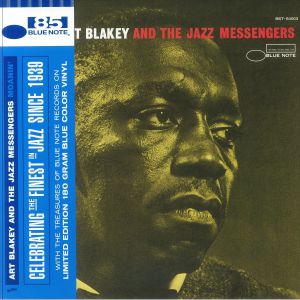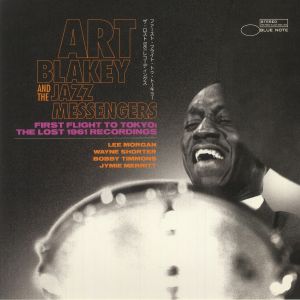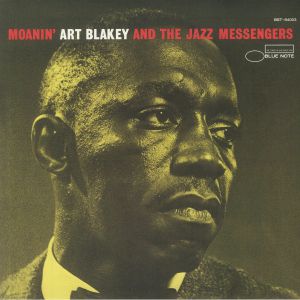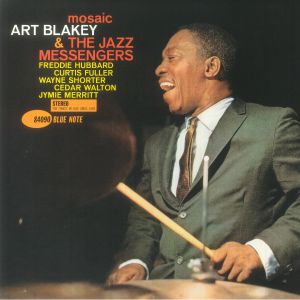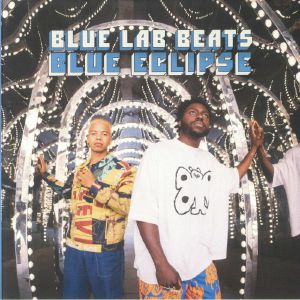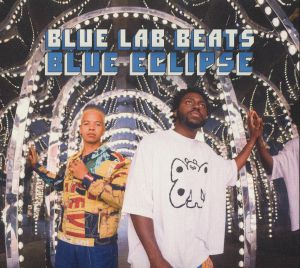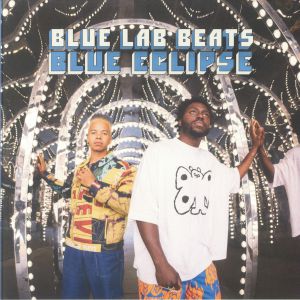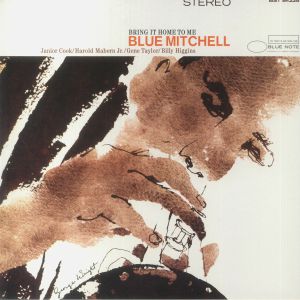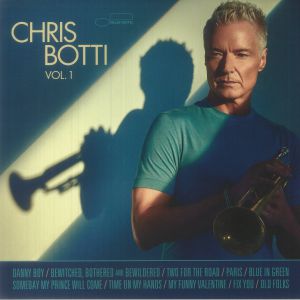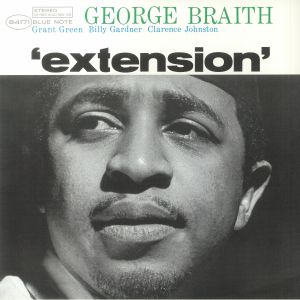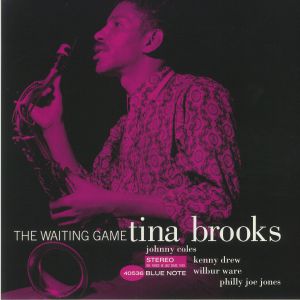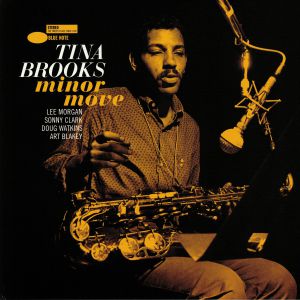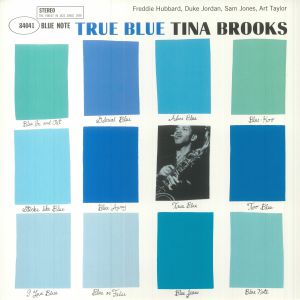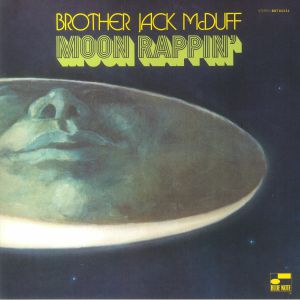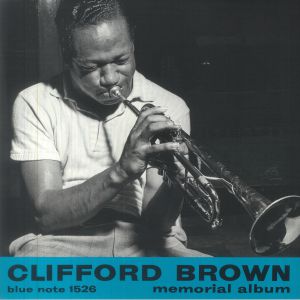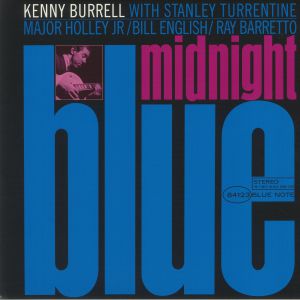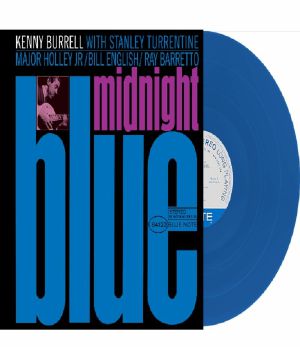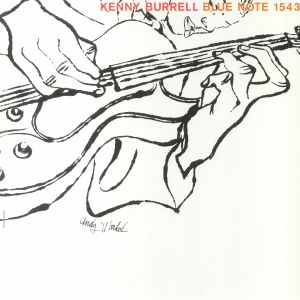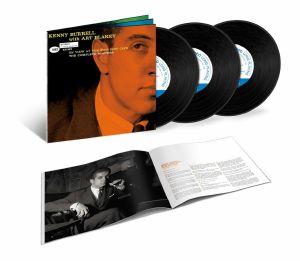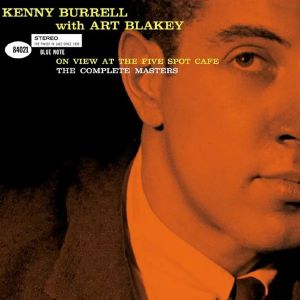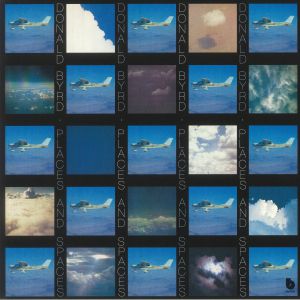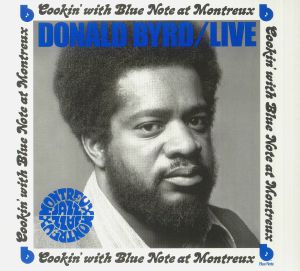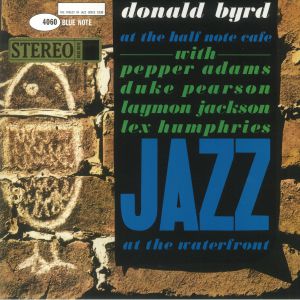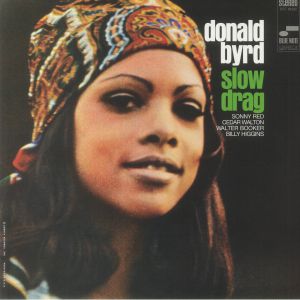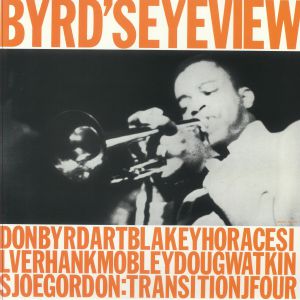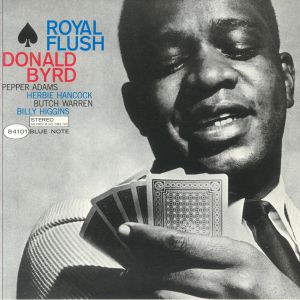Filter
在庫状況
アーティスト
レーベル
Featured
リリースタイトル
値段
Back catalogue: All genres
Juno's full catalogue of All genres
シングル
Review: 2020’s acclaimed Blue Note Re:imagined project heard London duo Blue Lab Beats - producer NK-OK and multi-instrumentalist Mr DM - usher in 2021 with the EP We Will Rise and its dynamic lead single ‘Blow You Away (Delilah) feat Ghetto Boy'. Now neatly bagged up in a five-tracker EP, with collaborations with Braxton Cook, Kojey Radical, Alex Blake, and DTsoul, this one’s a heartfelt but still breezy project, laying down healing and hope in the face of racism. Reassurance and joy interlace a sound pinching motifs of boom-bap and jazz-funk, with influences from hip-hop pioneers and the African diaspora. A future-focused London bowls headlong into the future, chanting the motto 'We Will Rise’.
… Read more in stock $21.37
アルバム
in stock $14.43
in stock $29.16
Review: After nearly three decades and almost 20 albums, Bill Charlap remains a paragon of jazz piano, with his trio - bassist Peter Washington and drummer Kenny Washington - standing as one of today's premier jazz groups. Their latest Blue Note release, And Then Again, recorded live at the Village Vanguard, harnesses the trio's extraordinary synergy and intuitive communication. The trio's has an unparalleled cohesion with sharp decision-making, and dynamic improvisations. The album highlights a blend of songbook classics and compositions by jazz greats, including the vibrant lead track, 'And Then Again' by Kenny Barron. Each performance moves from a calculated vision to a more spontaneous and intuitive approach. Years of critical acclaim and regular performances at the Vanguard have solidified their status, with Charlap's early experiences at the famed club fueling his passion. A thrilling and heartfelt live recording.
… Read more in stock $31.93
Review: Jazz fans are in for a real treat here as Blue Note unleash a never before heard studio album by Art Blakey & The Jazz Messengers. It was recorded back in 1959 at the legendary Rudy Van Gelder's Hackensack studio and has Lee Morgan, tenor saxophonist Hank Mobley, pianist Bobby Timmons, and bassist Jymie Merritt all playing as part of the recording. As the title suggests, it's a breezy, super cool record with seductive trumpets and icy drums all next to neat keys that encourage you to gently bop. After months of waiting, it proves more than worth all the anticipation.
… Read morePlayed by: Juno Recommends Jazz
in stock $24.98
in stock $28.60
in stock $28.60
Cat: 807387. Rel: 15 Nov 19
Jazz
in stock $22.49
Cat: 377125 3. Rel: 04 Apr 14
Jazz
in stock $36.63
Review: Recorded during the same intense August 1960 sessions that produced another iconic album, this release showcases the brilliance of a hard-bop quintet, combining fiery improvisation with introspective ballads. The album opens with a standard tune that became a regular feature in the group's live sets, setting the stage for a collection of original compositions. Lee Morgan's 'Johnny Blue' stands out with its infectious blues line, while Wayne Shorter's compositionsiparticularly 'Sleeping Dancer Sleep On'ireveal his growing mastery of melody and complex chord changes. The track is a highlight, with lush, gospel-funky piano and a slow, stunning waltz rhythm. Shorter's 'Noise in the Attic' is a powerful drum showcase, allowing for blistering solos from the horns but placing special emphasis on the piano work. 'Giants', another Shorter composition, closes the album with a hard-bop anthem that keeps the energy high and steady throughout. While Blakey typically dominates with his high-energy drumming, here he takes a more restrained role, allowing the melodies to breathe. The synergy of the quintet is palpable, with Bobby Timmons' percussive piano providing a dynamic counterpoint to the horn lines.
… Read more in stock $29.16
in stock $18.87
Moanin' (limited 180 gram blue vinyl LP with obi-strip (indie exclusive))
Cat: 585922 8. Rel: 08 Aug 24
Jazz
Review: Art Blakey & The Jazz Messengers' Moanin' is a quintessential hard bop album that effortlessly stands out with its classic, distinctive sound. Released in 1958, this seminal record features a lineup of jazz luminaries, including pianist Bobby Timmons, saxophonist Benny Golson, trumpeter Lee Morgan, and bassist Jymie Merritt. Despite its adherence to traditional hard bop elements, the album shines with an exceptional blend of precision, enthusiasm, and depth. The title track, 'Moanin',' composed by Timmons, sets the tone with its infectious groove, while Golson's contributionsi'Along Came Betty,' 'Blues March,' and 'Are You Real?'iadd a range of emotions and rhythms, from lyrical to powerful. The standout 'The Drum Thunder Suite' shows Blakey's unparalleled drumming strength, combining dynamic rhythms and Latin influences. The album's meticulous craftsmanship ensures that every track maintains the listener's attention, offering a mix of accessible melodies and intricate musicianship. Blakey's leadership and the band's chemistry result in an album that is not only a highlight of hard bop but also a compelling entry point for jazz enthusiasts. Moanin' remains a timeless classic, celebrated for its masterful execution and enduring impact on the jazz genre.
… Read morePlayed by: Juno Recommends Jazz
in stock $41.36
First Flight To Tokyo: The Lost 1961 Recordings (limited gatefold 180 gram vinyl 2xLP + booklet + postcards)
Cat: 359528 6. Rel: 10 Dec 21
Jazz
Review: First Flight to Tokyo: The Lost 1961 Recordings is sure to be a real thrill for fans of Art Blakey and his Jazz Messengers. It is a never before rebased or heard recording of a show they played at Hibiya Public Hall in Tokyo on January 14, 1961. The group was one of the first to tour the country and enthralled caudices everywhere they played. At the time, the band was made up of Lee Morgan on trumpet, Wayne Shorter on tenor sax, Bobby Timmons on piano and Jymie Merritt on bass and for this set they performed plenty of classics such as Charlie Parker's 'Now's the Time' and Thelonious Monk's 'Round About Midnight.'
… Read more in stock $45.52
Cat: 776473 9. Rel: 13 Sep 19
Jazz
in stock $21.93
in stock $26.37
A Night In Tunisia
Sincerely Diana
So Tired
Yama
Kozo's Waltz
Review: One of the finest line-ups of Art Blakey & The Jazz Messengers came together when saxophonist Wayne Shorter joined trumpeter Lee Morgan, pianist Bobby Timmons and bassist Jymie Merritt, as featured on this now newly reissued 1960 album A Night In Tunisia. The album kicks off with a blazing rendition of Dizzy Gillespie's iconic piece - which lends its name to the LP - while the rest of the set highlights original compositions from the new band members. This Blue Note Classic Vinyl Edition is a stereo, all-analogue release mastered by Kevin Gray from the original master tapes, so sounds superb.
… Read morePlayed by: Juno Recommends Jazz
in stock $31.37
Review: Blue Note reissue the drummer Art Blakey and his Jazz Messengers' time-honoured hard bop album Mosaic, often cited as among his best. From the titular opener to the seguing montage-worthy sequences of 'Arabia', 'Crisis' or 'Down Under', we're met with huge, extruding saxes and trombones, backed by Blakey's un-pin-downable drumming, evocative of huge towering New York skylines and crowd bustle; apparently, the album was so tightly performed it needed no alternate takes.
… Read morePlayed by: Juno Recommends Jazz
in stock $29.16
Blue Eclipse (B-STOCK) (translucent blue vinyl LP)
Cat: 589432 3 (B-STOCK). Rel: 01 Jan 90
Broken Beat/Nu Jazz/Nu Soul
B-STOCK: Sleeve damaged but otherwise in excellent condition
Review: ***B-STOCK: Sleeve damaged but otherwise in excellent condition***
Sizzling-hot hip-hop duo Blue Lab Beats are on everybody's lips now, thanks at least in part to the announcement of their latest full-length album, Blue Eclipse. Heralding an exciting new era for the duo, these 12 songs reveal the depth and breadth of producer NK-OK, and multi-instrumentalist Mr DM's musical ambition. Throwing back to their debut EP 'Blue Skies', which even pre-dates their involvement with record labels, Blue Eclipse signals a circling back to their origins while also embracing the new; the pair's usual jazztronica remit is lent the utmost contemporary spin, with notes of drill, neoclassical, trap and Jersey bounce - all still prevalent styles - peeking through in these latest productions.
… Read moreSizzling-hot hip-hop duo Blue Lab Beats are on everybody's lips now, thanks at least in part to the announcement of their latest full-length album, Blue Eclipse. Heralding an exciting new era for the duo, these 12 songs reveal the depth and breadth of producer NK-OK, and multi-instrumentalist Mr DM's musical ambition. Throwing back to their debut EP 'Blue Skies', which even pre-dates their involvement with record labels, Blue Eclipse signals a circling back to their origins while also embracing the new; the pair's usual jazztronica remit is lent the utmost contemporary spin, with notes of drill, neoclassical, trap and Jersey bounce - all still prevalent styles - peeking through in these latest productions.
in stock $22.97
in stock $10.70
in stock $31.93
Review: Sizzling-hot hip-hop duo Blue Lab Beats are on everybody's lips now, thanks at least in part to the announcement of their latest full-length album, Blue Eclipse. Heralding an exciting new era for the duo, these 12 songs reveal the depth and breadth of producer NK-OK, and multi-instrumentalist Mr DM's musical ambition. Throwing back to their debut EP 'Blue Skies', which even pre-dates their involvement with record labels, Blue Eclipse signals a circling back to their origins while also embracing the new; the pair's usual jazztronica remit is lent the utmost contemporary spin, with notes of drill, neoclassical, trap and Jersey bounce - all still prevalent styles - peeking through in these latest productions.
… Read morePlayed by: Juno Recommends Broken Beat Nu Jazz
in stock $30.54
Bring It Home To Me (Tone Poet Series) (gatefold 180 gram audiophile vinyl LP)
Cat: 359266 6. Rel: 01 Dec 22
Jazz
Review: American trumpeter Blue Mitchell, as his name suggests, had a sound rooted mostly in the blues. He was a Blue Note artists who recorded this album in 1966 and included in it is 'Portrait of Jennie' which was a ballad originally written for the movie Portrait of Jennie in 1948. Guests Jimmy Heath, Tom McIntosh and J. Russell Robinson all feature across the six tunes which mix up modal harmonies with some lyrical moments and groove-driven and subtly funky rhythms. It's a rare one to find on vinyl so do not sleep on this reissue.
… Read more in stock $36.63
Booker Little 4 & Max Roach (Tone Poet Series) (180 gram audiophile vinyl LP)
Cat: 488194 8. Rel: 03 Oct 24
Jazz
Review: The reissue of Booker Little 4 & Max Roach as part of the Tone Poet Vinyl Series is an exciting announcement for jazz fans. Booker Little, a brilliant trumpeter whose life was tragically cut short at 23, left an indelible mark on the jazz world. This 1958 album, recorded when Little was just 20, showcases his extraordinary talent both as a musician and composer. The LP features the dynamic interplay between Little and Max Roach, one of jazz's most influential drummers, along with George Coleman on tenor sax, Tommy Flanagan on piano and Art Davis on bass. It opens with a spirited rendition of Miles Davis' 'Milestones', setting the tone for the session, before the standards 'Sweet and Lovely' and 'Moonlight Becomes You' are given fresh interpretations. But the heart of the album lies in Little's original compositions: 'Rounder's Mood,' 'Dungeon Waltz,' and 'Jewel's Tempo.' These tracks highlight his inventive melodic sense and technical strength. The Tone Poet Series ensures an audiophile-quality experience, with meticulous mastering by Kevin Gray and a deluxe presentation that lives up to the highest standards.
… Read morePlayed by: Juno Recommends Jazz
in stock $40.81
in stock $30.54
Review: Extension was the last of three unique Blue Note sessions led by the singular saxophonist George Braith in the early 1960s. The album was rooted in soul jazz - with Grant Green (guitar), Billy Gardner (organ), and Clarence Johnston (drums) - but Braith's adventurous spirit led the music into unexpected realms on memorable originals like "Nut City." Blue Note Classic Vinyl Series is all-analogue, mastered by Kevin Gray from the original master tapes, and pressed on 180-gram vinyl at Optimal.
… Read morePlayed by: Juno Recommends Jazz
in stock $12.50
in stock $39.96
The Waiting Game (Tone Poet Series) (reissue) (gatefold 180 gram audiophile vinyl LP)
Cat: 893419. Rel: 29 Jan 21
Jazz
Review: Tina Brooks' final album was one of his most underrated. The tenor saxophonist really brought the goodness on The Waiting Game, which she record din 1961 but did not put out until 1999. The undervalued player might have played a big part in the hard bop era but only one of his Blue Note sessions ever made it out. Here he is joined by Johnny Coles on trumpet, Kenny Drew on piano, Wilbur Ware on bass, and Philly Joe Jones on drums, and wrote five of the six tunes himself. It's a soulful sound with highlights like modal masterpieces 'Dhyana' and 'David the King.'
… Read morePlayed by: Juno Recommends Jazz
in stock $44.97
Minor Move (Tone Poet Series) (reissue) (gatefold 180 gram audiophile vinyl LP)
Cat: 778684 5. Rel: 25 Oct 19
Jazz
in stock $44.97
Review: Tina Brooks is actually the name that American tenor sax man Harold Floyd "Tina" Brooks went by. He was a hard bop pioneer active from the 50s onwards and he recorded with But Note between '58 and 61 with sidemen such as Kenny Burrell, Freddie Hubbard and Jimmy Smith. He recorded five albums for the label but many came after his death. Not True Blue, though, which came at the same time as his Blue Note debut, Open Sesame. it wasn't actively promoted but has since got plenty of appreciation from fans and critics alike.
… Read more in stock $31.93
Moon Rappin' (reissue) (limited gatefold 180 gram audiophile vinyl LP)
Cat: 453520 5. Rel: 27 May 22
Jazz
Review: Brother Jack McDuff's Moon Rappin is one of those records which sets off a thousand sample-spots. The prolific jazz man made an incredibly catchy kind of jazz funk on this record, with the title track making for something of a peak of the genre in its cool and deadly groove. It's got soul for days and plenty of compositional chops to keep you locked in for the duration. Equally, if you're looking for hot breaks, they're smattered all over this record thanks to Joe Dukes holding it down on the skins and McDuff working his magic on the organ. A timeless classic, repressed by the good folk at Blue Note with their high quality standards present and correct.
… Read morePlayed by: Juno Recommends Jazz, DJ ROCCA
in stock $30.82
Review: Brother Jack McDuff's Moon Rappin is a bold exploration of funky and spacey soundscapes, marking a departure from his usual soul-jazz style. While the album may not adhere to traditional jazz norms, its fusion of funk rhythms with jazz improvisation showcases McDuff's versatility and willingness to experiment. Tracks like 'Flat Backin' and the title track blend jazz flutters over a funk foundation, creating a dynamic and engaging listening experience. With its heavy wah guitar and top-notch drumming, the album successfully bridges the gap between jazz and funk, offering a glimpse into the progressive musical trajectories of the era. In hindsight, Moon Rappin emerges as an unintentional precursor to the funk and jam music that would follow, with its spacey soundscapes hinting at the psychedelic funk to come. McDuff's adventurous spirit and willingness to push boundaries make Moon Rappin a noteworthy and influential record that deserves recognition for its role in shaping the musical landscape of its time.
… Read more in stock $19.43
Review: The incomparable trumpeter Clifford Brown recorded two leader sessions for Blue Note in 1953 - a co-led quintet date with Lou Donaldson and his own sextet date - that were compiled on the 12" Memorial album, shortly after his tragic death in 1956. Brownie's star burns bright from the blistering 'Cherokee' to the stunning ballad 'Easy Living'. This Blue Note Classic Vinyl Edition is mono, all-analog, mastered by Kevin Gray from the original master tapes and pressed on 180g vinyl at Optimal.
… Read morePlayed by: Juno Recommends Jazz
in stock $30.54
in stock $26.37
Midnight Blue (Blue Vinyl Series) (limited 180 gram blue vinyl LP with obi-strip (indie exclusive))
Cat: 651174 3. Rel: 10 Oct 24
Jazz
Review: Kenny Burrell's Midnight Blue, recorded in 1963, stands as one of the finest examples of jazz guitar blended with deep blues. Backed by an impressive lineup including Stanley Turrentine on tenor sax, Major Holley Jr. on bass, Bill English on drums, and Ray Barretto on congas, the album creates a warm, late-night mood. Burrell's originals like 'Chitlins con Carne', 'Midnight Blue' and the beautiful solo guitar piece 'Soul Lament' bring a rich, soulful character to the session. Known for his smooth, understated approach, Burrell fills the record with subtle elegance. Turrentine's big, soulful sax and Barretto's rhythmic congas add layers of texture, making this a truly great listen. The relaxed, intimate atmosphere captured by Rudy Van Gelder's exceptional recording skills allows each instrument to shine, with Burrell's guitar work at the center, delivering warmth and swing with a vintage touch. This edition, all-analog and pressed on 180g vinyl, brings the full depth of the original sound to life.
… Read more in stock $40.81
Kenny Burrell (Tone Poet Series) (mono) (limited gatefold 180 gram audiophile vinyl LP)
Cat: B 003348601. Rel: 06 Oct 22
Jazz
Review: The Tone Poet series from Blue Note continues apace with this reissue of Kenny Burrell's masterful self-titled album. As guitarists go, Burrell has a sound which dances with nimble eloquence few could even dream of matching. Hear him cavorting across 'Be Happy' and it's quite hard to imagine the notes were played by human hands. Despite that, it's also a wonderfully delicate, rounded sound which more than makes it worthy of an entry into this series - just marvel at that tone, captured across a variety of spots in New York in the spring of '56.
… Read morePlayed by: Juno Recommends Jazz
in stock $32.75
KB Blues (Tone Poet Series) (mono) (gatefold 180 gram audiophile vinyl LP)
Cat: 450925 7. Rel: 09 Nov 23
Jazz
Review: The Tone Poet series from Blue Note recently reissued legendary American guitarist Kenny Burrell's self-titled album, which was recorded in 1956 across several of New York's finest venues. Now it looks to his KB Blues album which came a year later and was his third session as a Blue Note label leader in the studio of legendary producer Rudy Van Gelder in New Jersey. His signature playing style comes to the fore with Horace Silver on piano, Hank Mobley on tenor saxophone, Doug Watkins on bass, and Louis Hayes on drums. The album features their take on Silver's 'Nica's Dream' and Burrell's 'Out for Blood' plus two different takes of Burrell's easy-going 'K.B Blues.' A really swinging set.
… Read more in stock $34.98
Kenny BURRELL with ART BLAKEY
On View At The Five Spot Cafe: The Complete Masters (Tone Poet Series) (gatefold 3xLP + booklet)
Cat: 750228 1. Rel: 24 Apr 25
Jazz
in stock $81.06
Review: By the time Kenny Burrell took the stage at the Five Spot Cafe in August 1959, he had already 90-degree head-turned his best jazz fellow travellers with a glissando of Blue Note LPs. But this gig, his first live date as a leader, brought a new kind of magic. Contracting Art Blakey, Tina Brooks, Roland Hanna, Bobby Timmons, and Ben Tucker on band duties, Burrell confidently executed a suite of hard bop soaked in sweat, swing, and soul. This 3xLP brings that steamy summer evening back to life in full analogue detail; housed in a tip-on trifold jacket with an accompanying booklet of rare Francis Wolff photos, an essay by Syd Schwartz, and new reflections from Burrell himself, it's a vivid snapshot of a moment when everything clicked.
… Read more in stock $15.27
Review: Blue Note are on a reissuing roll, not shying from revisiting the work of their most treasured jazz acts this year. The latest in their Classic Editions comes by way of Donald Byrd, whose timeless 1975 album Places And Spaces documents the trumpeter's fearless jazz-funk fusion era. This being Blue Note, you can expect only the best rendition of this orchestral jazz-funk suite that a vinyl pressing has to offer. This version is an all-analog remaster, by legendary cutting engineer Kevin Gray, from the original tapes. Expect a thorough justice-doing of the hits, 'Dominoes' and 'Wind Parade', which boast production credits from the infamous Larry Mizell.
… Read more in stock $30.54
Review: Jazz trumpet legend Donald Byrd has one of those seemingly endless discography that takes in solo and group albums and is full of treasure that is well worth exploring no matter your particularly stylistic penchant. 1963's A New Perspective is a landmark album that brings gospel and soul elements into his usual jazz sound. It features a stellar lineup including Herbie Hancock and Hank Mobley and the centerpiece is the iconic 'Cristo Redentor,' a soulful composition that showcases Byrd's lyrical trumpet playing. With its fusion of genres, the album broke new ground and paved the way for future jazz explorations that Pitchfork have said is one of the best albums of the 1960s. Byrd's innovative approach and the ensemble's tight chemistry make that so.
… Read morePlayed by: Craig Charles Funk And Soul
in stock $31.93
Kofi (Tone Poet Series) (reissue) (180 gram audiophile vinyl LP + insert)
Cat: 554214 9. Rel: 03 Oct 24
Jazz
Review: Donald Byrd's Kofi, part of the esteemed Tone Poet Vinyl Series, presents a compelling snapshot of the trumpeter's transition from hard bop to fusion. Recorded in December 1969 and December 1970 but only released in 1995, this LP captures Byrd at a pivotal moment in his career, straddling the line between traditional jazz and the emerging fusion genre. The 1969 session features Byrd's originals 'Kofi' and 'Fufu,' with Duke Pearson's electric piano adding a shimmering layer to the complex arrangements. The ensemble includes notable musicians such as Lew Tabackin on flute and tenor saxophone, Frank Foster on tenor saxophone, William Campbell on trombone, Ron Carter on acoustic bass among other strong musicians. The 1970 session continues this exploration with tracks like 'Perpetual Love' and 'Elmina,' featuring Wally Richardson on guitar and Mickey Roker on drums, along with Moreira and Dom Um Romao adding percussion. This reissue, curated by Joe Harley and mastered by Kevin Gray from the original analog tapes, is pressed on 180g vinyl and housed in a deluxe tip-on jacket. The Tone Poet Series ensures exceptional quality in both sound and presentation, offering a definitive version of Byrd's adventurous work.
… Read more in stock $49.69
in stock $13.88
Review: This is a very special release indeed, for fans of Donald Byrd's 70s period and Blue Note devotees of all types. There was a heavy presence from the Blue Note roster at the 1973 Montreux Jazz Festival, and many of the performances were released under the Live Cookin With Blue Note at Montreux banner - Bobby Hutcherson, Bobbi Humphrey and Marlena Shaw being some notable mentions. But this set from Donald Byrd inexplicably sat on master tapes in relative obscurity for a long time and now, on what would have been Byrd's 90th birthday, this raw and urgent live performance gets a proper release. It's in the vein of his seminal Black Byrd LP, but there's a more direct attack from the band in their live form - take one listen and you'll see exactly what we mean.
… Read more in stock $26.09
At The Half Note Cafe Volume 1 (Blue Note Tone Poet Series) (gatefold 180 gram audiophile vinyl LP)
Cat: 381458 6. Rel: 02 Feb 23
Jazz
Review: Donald Byrd is one of our favourite trumpeters to adorn the Blue Note hall of fame; once more, the eminent label bursts open our doors with a fresh LP documenting an obscure live appearance. This time chronicling his appearance in November 1960 in New York venue Half Note, it hears Byrd feature alongside Pepper Adams, Duke Pearson, Laymon Jackson and Lex Humphries. With inclusions of such Byrd standards and favourites as 'My Shy Girl', 'Cecile' and 'Soulful Kiddy', this is as uptempo yet bluesy a live album as you can possibly get.
… Read morePlayed by: Juno Recommends Jazz
in stock $39.15
Slow Drag (reissue) (gatefold 180 gram audiophile vinyl LP + insert)
Cat: BLUNB 0034364011. Rel: 01 Jun 23
Jazz
Review: Donald Byrd's 1967 Slow Drag album came after the jazz legend had already recorded more than dozen albums for the seminal Blue Note label. He was joined for it by the drumming of Billy Higgins, alto saxophonist Sonny Red, pianist Cedar Walton, and bassist Walter Booker who all bring their own original compositions to the album. It's a pure hard bop session that marked the end of this chapter of Byrd's sound before he moved into fusion territory. Plenty of edgy groove-fess, ad-libbed vocals and boss flavours feature on what is one of many Byrd essentials.
… Read more in stock $34.70
in stock $18.87
Review: The great and hugely prolific Donald Byrd dropped many seminal albums both solo and with his Byrds and 'Byrd's Eye View', arriving now on Blue Note's Tone Poet Series which is renowned for its audiophile-grade vinyl reissues, is one of them that makes for a captivating jazz journey. With Byrd's virtuosity and innovation shining throughout, the album showcases his signature blend of hard bop and soulful melodies. It features six cuts and comes with a nice booklet that provides a wreath of context and background information to soak up while you sink into the sounds.
… Read morePlayed by: Juno Recommends Jazz
in stock $43.87
Byrd Blows On Beacon Hill (Tone Poet Series) (180 gram audiophile vinyl LP + insert)
Cat: TRLP 17. Rel: 04 Jul 24
Jazz
Review: Recorded in 1956 for producer Tom Wilson's Transition Records, Byrd Blows on Beacon Hill presents trumpeter Donald Byrd in a relaxed quartet setting. Joined by Doug Watkins on bass, Boston-area musicians Ray Santisi on piano and Jim Zitano on drums, Byrd delivers a standards-heavy set recorded on a rainy spring afternoon in the Beacon Hill home of engineer Steve Fassett. This casual atmosphere contributes to the album's easygoing charm and intimate feel. Highlights include Byrd's lyrical rendition of Joe Sullivan's 'Little Rock Getaway' and beautiful interpretations of 'Polka Dots and Moonbeams,' 'If I Love Again,' and 'Stella by Starlight.' The trumpeter steps back on tracks like 'People Will Say We're in Love' and 'What's New,' allowing the trio to really shine.
… Read morePlayed by: Juno Recommends Jazz
in stock $42.48
Royal Flush (Classic Vinyl Series) (reissue) (180 gram audiophile vinyl LP)
Cat: 650076 5. Rel: 17 Oct 24
Jazz
Review: Donald Byrd's Royal Flush, released in 1961 on Blue Note, exemplifies his mastery of hard bop, featuring a stellar lineup that includes a young Herbie Hancock on piano, Pepper Adams on baritone sax, Butch Warren on bass, and Billy Higgins on drums. This album marks Hancock's recording debut, showcasing his burgeoning talent as he steps into the shoes of Duke Pearson. The combination of Byrd's trumpet and Adams' baritone sax creates a unique, textured harmony that is both bold and refined. Tracks like 'Hush' and 'Shangri-La' highlight the band's cohesive interplay, with solos that are both distinct and beautifully integrated into the compositions. 'Requiem,' a standout piece penned by Hancock, offers a mid-tempo, gospel-tinged piano blues that allows Hancock to explore melodic space, supported by Byrd and Adams' plaintive lines and Warren's resonant bowed bass solo. What sets Royal Flush apart is Byrd's understated leadership, allowing each musician to shine while maintaining a unified sound. The result is an album rich in melody, brimming with the synergy of seasoned players and a young, innovative pianist on the rise.
… Read morePlayed by: Juno Recommends Jazz
in stock $31.93

 USD
USD






